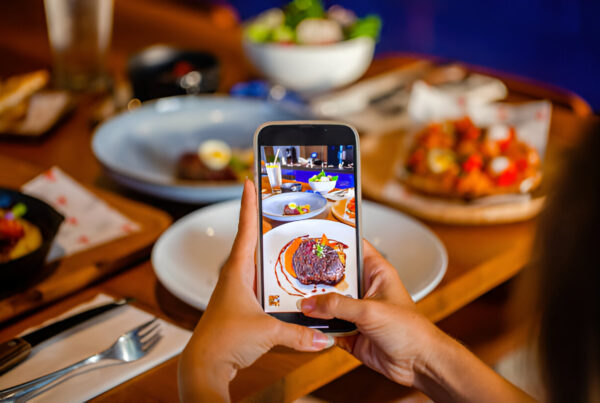Table of Contents
Our social media feeds are full of memes. The language of the 21st century includes them. They lighten the mood and occasionally share some pearls of wisdom. But is it a brilliant idea to use meme marketing? Would it entertain and alienate your audience at the same time? Everything relies on how you use them and whether it suits the tone of your business.
If you want to know how meme marketing can help your business, keep reading!
Why Brands Need To Use Memes In Their Marketing Plan
It’s a simple method to spruce up your blogs, or social media feeds. The story is told for you by an image or a video in this type of visual content marketing. Meming displays your brand’s personality and can help you create a community online.
Targets audience
The idea of memes can be approached as something other than a marketing initiative. The best memes frequently grow naturally and are only waiting to be developed. Even seemingly unimportant news, like Vice President Biden falling off a bike, can become a viral meme. It’s unimportant news that is interpreted in countless funny ways.
However, it would be better to know when you created this content and how it would appeal. Since a meme’s success depends on other people’s whims, it is hard to anticipate whether it will go viral. Making a material that people in your niche will identify with on an emotional level is beneficial in this regard. The best indicator of how popular your meme will be is that.
Memes make you relevant.

Memes increase the relatability and modernity of your brand because they are frequently based on a recent trend or event.
In a world where things are changing at the speed of light, they keep your brand relevant!
You already know that the goal of employing memes in marketing is to increase engagement and give users a sense of belonging.
Cost-effective
Marketing always benefits from graphic design. Users are constantly drawn to visual content on blogs and social media platforms. But it takes knowledge, effort, and cash. Memes demand different amounts of knowledge. The only requirements are a little time, a tiny bit of imagination (inspired by online browsing), and one or two tools.
By making memes, you can entertain your users while saving money.
Builds a community
We all had a slight sense of loss when the pandemic began. Even seasoned veterans of remote workers who have been working from home for more than ten years were perplexed. It was a unique situation that forced us to alter our routines and activities. It was challenging to understand what was happening in the rest of the world since we had to wear masks, wash our hands frequently, and sometimes go without going outside for weeks (or even months).
However, remote work memes slightly improved the situation. We connected with folks struggling on the opposite side of the globe. We might even chuckle and joke about the situation while working from home.
Because everyone in your audience can identify with the same situations, memes are a terrific way to foster a sense of community.
Memes are relatable
Since they are so relatable, memes have evolved into important communication tools. The right meme can remarkably pack a ton of meaning into a single, uncomplicated image. Yes, memes serve a small purpose in comic relief, but 36% of millennials and Gen Z use them to convey their emotions, and 28% use them when they lack the appropriate words.
This demonstrates that a relatable meme can become viral. It’s necessary to remember that, in most circumstances, people look for themselves in memes. They want recognizability in the sentiment expressed. Gucci was one of the first fashion companies to work with Instagram meme creators to advertise its watch line.
Meme-Based Content Incites Shares
Memes are great for driving traffic and visibility to your social media accounts since they are so easily shared.
When people come across a brilliant meme, they often forward it to their friends or even discuss it with others on their social networks. Even without your request, they have started promoting your brand in such a situation. When your audience connects with the circumstance you’re referencing, memes foster a sense of community. You’ll get fans and make your brand more relatable if you can make your audience chuckle.
What are the benefits and drawbacks of meme marketing?
Advantages
The advantages of using memes to communicate your brand narrative are as follows:
- Memes are affordable.
- They quickly increase post reach and are the best method for generating brand remembrance.
- increased user involvement.
- Converse with multiple audiences at once.
- Memes are simple to make and don’t require prior technological knowledge.
Disadvantages
Meme marketing has its own set of drawbacks, just like any other form of advertising:
- Memes don’t last long.
- There is always a danger that competitors performing better on identical meme designs will negatively impact your brand voice.
- To customize memes to particular user personas, much research is necessary.
- Memes can only be accurate if they are made carefully.
- high chance of offending different user segments.
You don’t always have to capitalize on a viral meme that is currently trending. To be honest, staying current with all the newest memes might be challenging.
You can make your own memes from scratch if you clearly understand what your audience finds engaging. Naturally, this requires more work and money for unique, high-quality photographs, but if your audience finds it useful and begins sharing, it can be worthwhile.
How to make a marketing meme?
The advantages of meme marketing are only a tiny portion of this sea, but the bigger chunk of knowledge is how to make a meme!
Don’t worry! We are your true partners and will take you through necessary steps to create a marketing meme.
Know your audience:
Before creating a meme, you need to know your target audience. Understand their preferences, values, and sense of humour to create a meme that resonates with them.
Keep it simple:
Memes should be easy to understand and shareable. Keep your message simple and use clear language so that it’s easy to read and understand
Use humor wisely:
Humour can be an effective way to engage your audience, but it can also be risky. Make sure that your humour aligns with your brand’s values and voice. Avoid controversial or offensive topics.
Be timely:
Memes are often based on current events or trends. Keep an eye on what’s happening in the world, and be quick to create relevant and timely memes.
(Sending a meme through the mail may seem less professional, but it would undoubtedly brighten the guy’s mood on screen! it’s okay to be funny once in a while.)

Be original:
While jumping on the latest meme trend is tempting, try to be original and create something unique. Your meme should stand out and be memorable.

Keep branding subtle:
While memes can be used for marketing purposes, they should not feel like advertisements. Use your branding subtly so that your meme feels authentic and shareable.
Test and iterate:
Like any marketing strategy, meme marketing requires testing and iteration. Monitor the engagement of your memes and use the feedback to improve your future campaigns.
Don’t force it:
Memes should feel organic and natural. Don’t force a meme or try to make it fit if it doesn’t work. Instead, move on and try something else.
Conclusion
It’s a consistent marketing strategy that enlivens your social media and creates an engaged online community for your content. You can freely shape that space to promote your items after people associate a particular emotion with your content.
Memes draw users’ attention with a simple image, animated GIF, or brief video. They work effectively with blog posts, product launches, email marketing, or even straightforward standalone social media posts because they are marked with particular marketing objectives.








Recent Comments